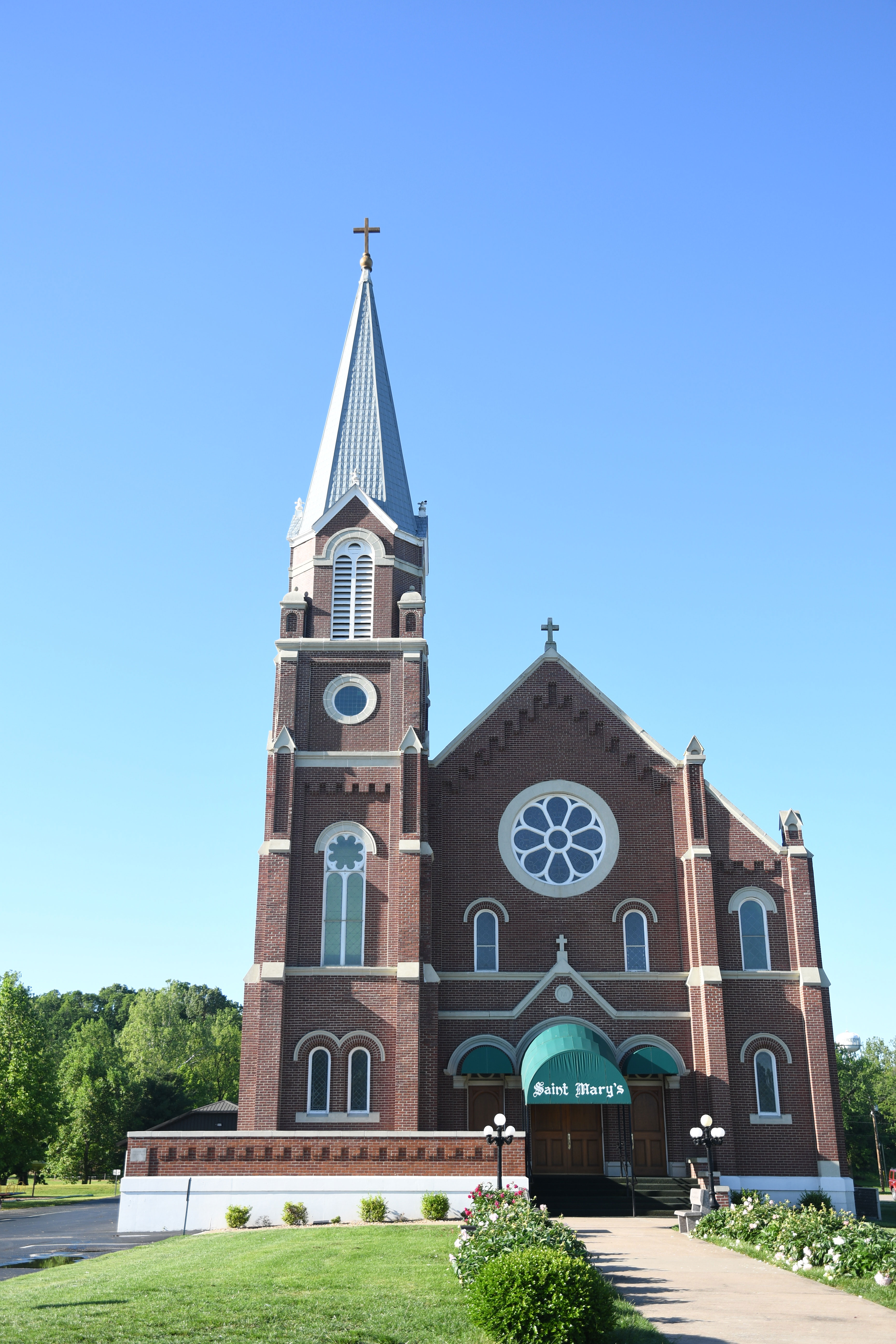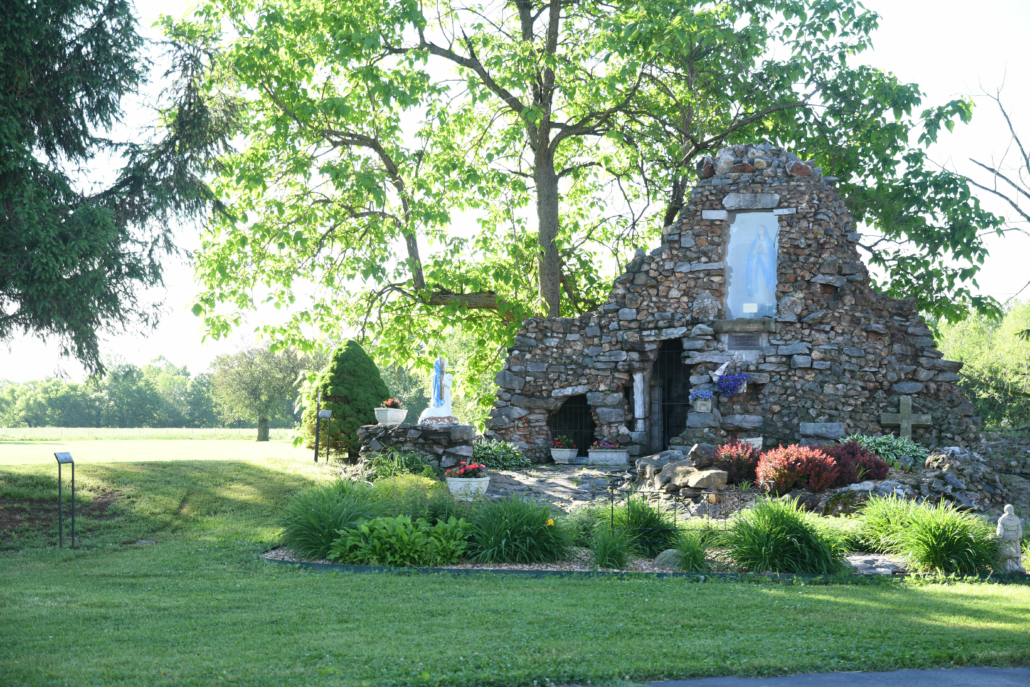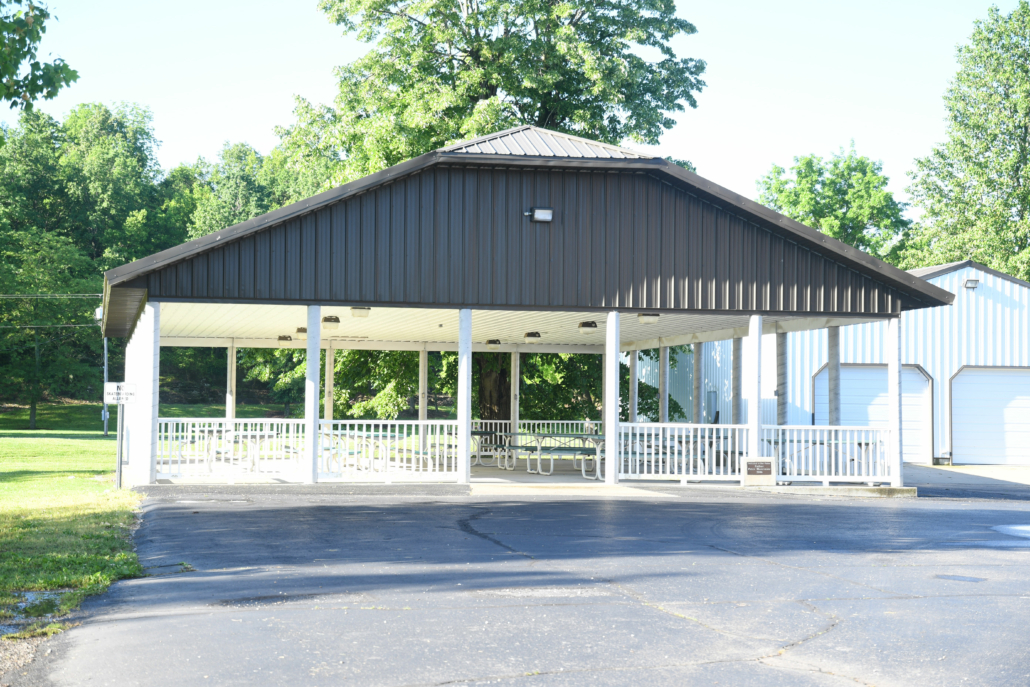History of St. Mary’s Catholic Church
In 1870, Catholic Irish, German and Polish workers on the Frisco railroad were the driving force in establishing Catholic parishes in and around Pierce City.
Before St. Mary’s Parish was established, all Catholics in Lawrence, Barry and Newton counties worshipped at St. John’s later renamed St. Patrick’s, the first Catholic church in Pierce City established in 1871. As more Irish and German and Polish settlers came to the area, the Germans sought to form a parish of their own. Bishop John Hogan of Kansas City gave them permission to do so and in September 1883 the first St. Mary’s church committee was elected and empowered to negotiate a deal with the Baptist congregation to purchase a tract of land just south of the Frisco railroad tracks in the Clear Creek Addition. Their first church was a remodeled and enlarged Protestant meeting house. The first parochial school classses were then held in 1885 and 1886 in a farmhouse located about seven miles south of town until a building was built in 1889 and taught by Sisters Eulalia and Benedicta of the Sisters of the Most Precious Blood from O’Fallon. When a fire destroyed the church building in 1892, it was replaced by a frame building on the same location. At that same time in 1892 the Polish immigrants at St. Patrick’s and St. Mary’s eventually formed a Catholic community in Bricefield (now Pulaskifield). The Irish and Germans remained in Pierce City.
Around 1895, the Orphan Trains came through Pierce City. Twenty-eight children were placed in the homes in the area. Many of the parishioners of St. Mary’s are direct descendants of those children.
In 1910, Father Sisbert Burkhand, O.S.B. became paster of St. Mary’s and during his pastorate the present spacious brick church was built at a cost of $30,000. The Romanesque style St. Mary’s was dedicated on March 11, 1913. The lack of priests caused the closing of St. Patrick’s church in 1954. A mission church begun in the 1905, St. Michael’s in Wentworth, was closed in 1966. Catholics who attended the latter two churches are now members of St. Mary’s parish.
In 1921 the Sisters left the school and for several years afterward the faculty consisted solely of lay teachers. Eventually Sisters of the Third Order of St. Francis (Nevada, MO) and later, the Vincentian Sisters (Pittsburgh, PA) staffed the school until 1986 when once again a lay faculty replaced the sisters.
In 1941 the flood waters seriously damaged the church basement, convent, and rectory but a successful fund drive allowed for repair work fixing the basement, improving the heating system, the roof was repaired, new light fixtures were installed, the interior was painted and decorated and the cross on the steeple was gold-leafed.
The present rectory, school and parish hall were built in 1968.
In 1975 when interior renovations were being made, the statue of the Pieta, which was long though to be of plaster, was unveiled as an age-old wood carving. The carving, which is believed to have been brought to St. Mary’s in 1892 by Father Thomas, was uncovered by the art instructor who had been hired to paint the statue.
In 1981 the multi-purpose building was built.
St. Mary’s Old Fashioned Picnic was started as a fund raiser in June of 1987 and continues as a successful event with all parishioners taking part on the first Sunday in June.
In 2005 the pavilion was built.
On May 4, 2003, a tornado all but destroyed the town. The church and school sustained minimal damage in comparison to the condition of the buildings on either side of the main road. St. Mary’s church became an unifying presence as a shelter and a center of operation for FEMA and many other organizations working together to provide help for the tornado victims. Surrounding counties and cities as far away as Chicago helped the tornado victims in whatever way they could. After reconstruction and repairs were made to St. Mary’s, the church was rededicated on March 17, 2004.



